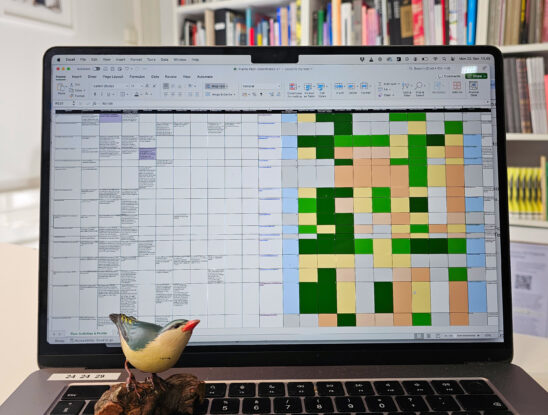
I just finalised a benchmark spreadsheet for Frame Contemporary Art Finland. The sheet lists 22 organisations with missions similar to Frame and contains 35 columns of potentially relevant information. The document maps how organisations currently build and support international connections in visual and contemporary art. I’ve been wanting to have a benchmark list like this for a very long time, and thanks to the advent of efficient AI tools, it finally exists.
The document is based entirely on publicly available materials, so it contains no hidden secrets. Feel free to get in touch if you want to get a copy of the spreadsheet!
I’m also working on two follow-up documents. One focuses on specific countries and adds more organisations, showing how gaps in activity are sometimes filled by other players and giving a clearer picture of each national ecosystem.
The other, which I find even more exciting, looks at “low-hanging fruit” — novel activities taken up by just one or two organisations. The goal is to gather fresh ideas and broaden the opportunities Frame could explore.
It would also be interesting to create similar spreadsheets for other art forms — music, theatre, film, and so on. Each discipline has its own ecosystem and operational logic; there is no one-size-fits-all method that applies across the arts.
Some reflections on how the document was made and what significance it might have:
The process of making this document resembled quite a bit the work of a software designer (my profession when I was a youngster). I had to break the work into manageable steps and frame each step with clear constraints, so that progress could be tested and verified. A key part of the process was defining the information sources upfront – it allowed me to utilise the superhuman information-processing capacity of generative AI while avoiding its wilder hallucinations.
It would have made little sense to delegate this task to a human assistant. Generative AI is simply far superior at scanning vast amounts of material in multiple languages (in this case Danish, Dutch, Korean, Japanese, etc). The compromise one currently has to live with is that while generative AI can be incredibly powerful, it can also be frustratingly dumb, sometimes failing at the simplest of tasks.
One could say that ‘I was able to make this document NN times faster because of generative AI’, but I think that would be misleading. Without generative AI, I would never have started the project in the first place – completing it within the available work hours would not have been realistic. Nevertheless, working on this document meant I recently spent more, not fewer, hours at my laptop.
What generative AI has really changed in my daily work is that I can clear certain routine tasks more quickly and devote more time to the challenging, complex tasks. The result is a general upgrade in the quality of my work, even though there are no obvious savings at the organisational level (my salary and working hours remain the same).
Using this spreadsheet as an example, one fundamental value of generative AI is the potential to improve the quality of decision-making. Even a modest 5–10 % gain can obviously have profound effects: the difference between a correct and a mistaken decision can sometimes determine whether an organisation thrives or fails.
And finally, a small disclaimer –
In the near future (and already to some extent today), it will be possible to run advanced generative AI models on personal devices, without devouring vast amounts of energy or other resources. Meanwhile, the current situation is quite bonkers: a small circle of overvalued giga-corporations is doing its best to amplify the market bubble by pouring astronomical sums of money into one another.